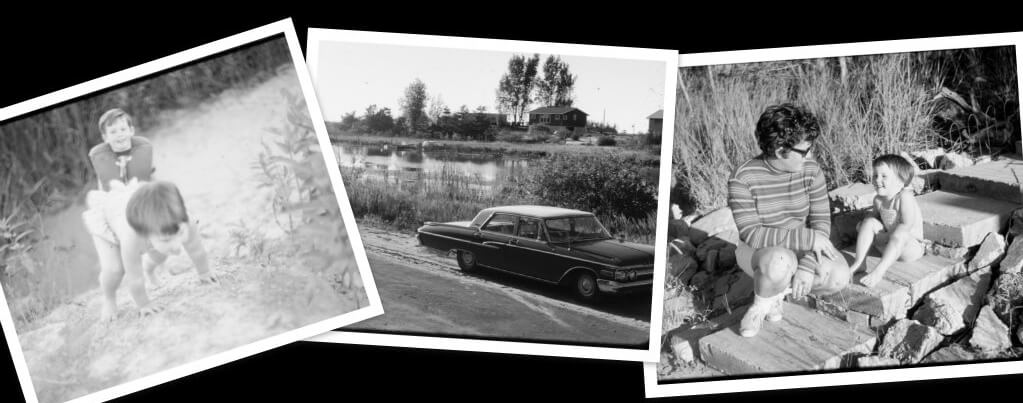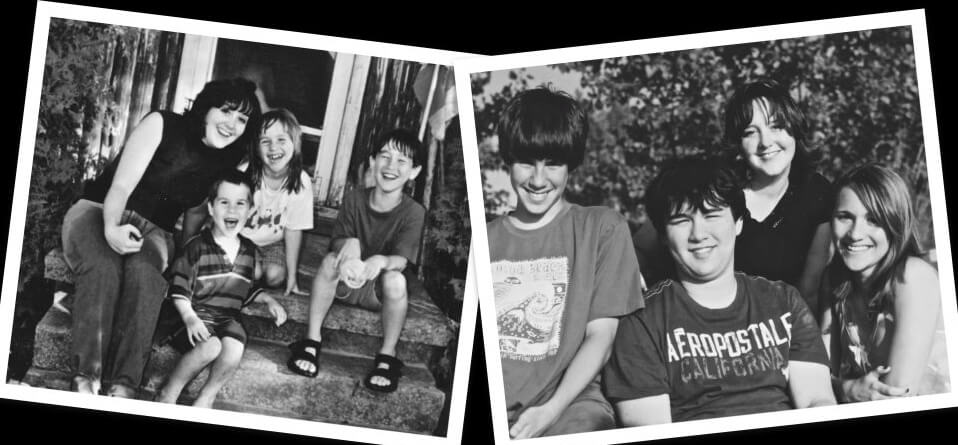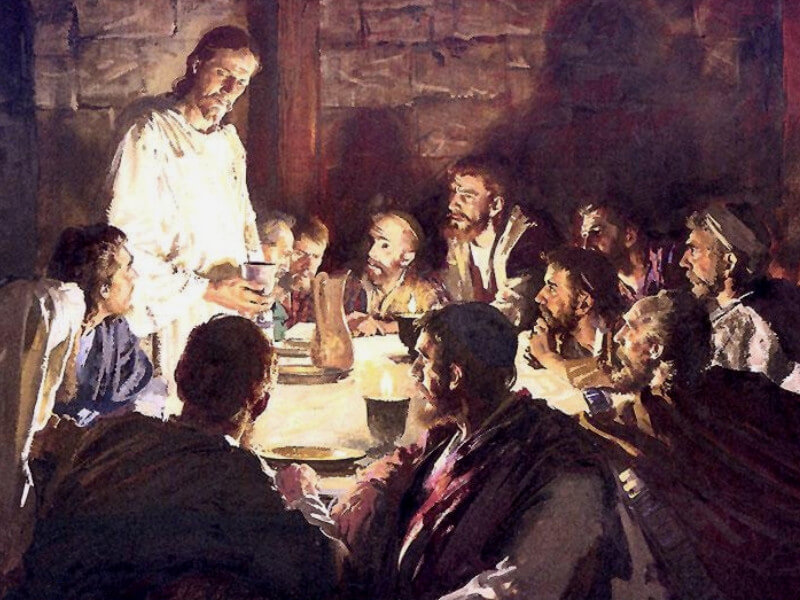Transitioning well. It’s possibly the topic requested most often at the seminars I lead, in part because so much transition happens in the course of ministry and in part because most of us realize we haven’t always done it well. Though this article is written with missionaries in mind, it is applicable to anyone who is leaving one place to enter another.
The following five steps are just a starting point for the process of goodbye’ing. When I lead sessions, it can take up to 2 hours to cover them all, so please understand that this is a skeleton outline and that you and your family can flesh it out with mindsets, activities and planning that are specific to your situation. Tip: if you have children, I encourage you to invest in a FAC (Family Adventure Calendar) and make the steps to healthy closure a group endeavor.
The acronym I use for my sessions on transition is P.E.A.C.E. The application of that word to transition is obviously multi-faceted, but for me, it’s a reminder of John 14:27 and God’s promise that even in the midst of life’s most complex upheavals, He gives us peace. I’m also a strong believer in doing our part to seize God’s promises, and the following outline is intended to focus our minds and actions in order to more fully allow that peace to be ours.
I. PLAN AND PERSEVERE
The planning for a major move covers all kinds of areas, some of them logistical (disconnecting utilities, buying plane tickets, selling a vehicle) and some of them personal (planning for life in a new place, packing, saying goodbyes)…
The beginning of this step is a great time to stage a Grand Reveal for your FAC (Family Adventure Calendar). Home-made, creative ones are the best! It needs to be big enough for all kinds of notes to be written into its “days,” and cover the amount of time remaining before the move.
In this stage, use the FAC not only to chart deadlines by which you need to complete some of the logistical details and red-tape of your transition, but also to help your family members to keep on track with their own preparations. For instance, pick a date when winter clothes will need to be sorted and packed. Decide as a family when pictures/posters should come off bedroom walls, when knickknacks and “sacred objects” need to find their way into a box, etc. Bear in mind that some children will need days, not hours, to decide what to take and what to leave! And then, for each FAC deadline, plan a small reward. When those winter clothes are packed away, go out for a meal that’s typical of the place where you live, so it can be a celebration of your life there as well as a reward.
One aspect of planning that can be helpful to the whole family is to intentionally investigate the new place to which you’re moving. Do some Googling—and maybe even assign specific topics to each child in your family, topics they were relate to in a personal way. If you have a sports enthusiast, give him/her the task of looking up local teams and involvement opportunities (you may want to do some advanced Googling to make sure his/her search won’t be more depressing than helpful!). Have another child chart the distance from your new home to various points of interest. Have another child make a list of places the family should try out in the first few weeks there (activities, restaurants, parks, etc.). Looking ahead with a positive attitude is critical to the “Plan” part of this stage.
As for the “Persevere” segment of the title, that has everything to do with weariness. Transition is exhausting on so many levels. But you will benefit greatly, by the time it’s over, if you’ve found the courage and endurance to stick to the plan and persevere. If you’re a parent, you’ll need to be a cheerleader for your children too, as perseverance isn’t always an engrained trait…but again, it will all feel worth it when you reach Transition Day and feel that you’ve done all you could to prepare well and make it healthy.
Tip: If you have young children who don’t understand the timeline of a calendar, you may want to use a paper-chain that has the exact number of links as the days remaining before your move. Remove one link per day and they’ll better grasp the shortening time frame. You can do the same with Advent Calendars (if they exist where you live). Buy a couple extras at Christmastime and use them to make the count-down a little more “graspable” for your little ones.
Another tip: I recommend, where possible, that families give themselves a full year (yep!) for the planning part of transition. That way you’ll be able to easily schedule in all the logistics and “lasts” that come with Step III, without feeling overwhelmed in the final days. Children often need a bit longer to wrap their minds around huge change than adults do, so this would also give them the processing time they need.
II. ELIMINATE CONFLICTS
I’ve worked with an awful lot of missionaries and adult MKs. Of all the regrets I’ve heard them express, none have been as common or as “burdensome” as unresolved conflict. MKs especially find their identity rooted in relationship…as do an awful lot of missionaries, by virtue of what we do. And in the craziness of a major move, we often don’t realize how crucial it is to invest intentionally in repairing broken or wounded friendships—whether they be between family members, acquaintances or colleagues. Even years later, I’ve seen people grieve their inability to go back and at least TRY to fix a relationship that used to be important to them.
In order to be intentional about resolving conflicts, it’s important that we carve some time out of the busyness of transition—and well before moving day—so we can evaluate our relationships with a clear, uncluttered mind. We’re not very good at giving ourselves that permission when we feel the pressure to accomplish tasks and meet looming deadlines. But we need to be aware that the “healthy leaving” we strive for will be diminished if unresolved conflict is left untreated. If you’re a parent, you may need to help your child to identify any friendships that still need attention.
With children and adults, I always emphasize three basic components of healthy conflict resolution:
- Using careful words that open a conversation rather than accusing the person. Phrases like “I feel” and “I’d like” are much more conducive to this kind of interaction than more aggressive phrases that immediately engage conflict like “You did this” and “How could you”… Some kids will do better with writing out their opening sentences and reading them to the other party. That’s fine if it’s done humbly and with ample time for unscripted exchange.
- Acknowledging one’s own failures in a relationship. Do this early and sincerely as you open the conversation, so your friend/colleague knows that you are aware of your own shortcomings and your responsibility in the friendship’s decline.
- Never expect the same sentiments in return. So many times, we subconsciously communicate to our young people that if they just take the first step toward reconciliation, instant restoration will happen. That’s setting them up for disappointment and possibly ridding them of the desire to ever try again. We need to encourage them to seek reconciliation, give them the tools to do it well, then relieve them of the responsibility to actually achieve full relationship repair. I ALWAYS tell the young people I work with that all they can do is their part. How the other party receives it and whether or not reciprocation happens is entirely out of their control. Doing the right thing only engages their half of the equation, and the other person (and the Holy Spirit) will have to take care of the other half. If they feel that they have genuinely sought to restore a broken relationship, with the right intentions, persistence and humility, they have done enough. The outcome is not theirs to predict or control. The same, of course, goes for adults.
III. ACKNOWLEDGE PEOPLE, PLACES, FOODS, CUSTOMS, ETC.
This is my favorite step of transition! Of course it is—it gives me permission to indulge! =-) Your FAC is going to be essential to making everything involved in this step happen. And again, if you can give yourself a full year of preparation and spread these activities out over several months, it will be that much more enjoyable.
The first step is to sit down with a blank piece of paper (one per person, if you are a family) and write down a few headers: people, places, foods, customs, activities…and any other that are pertinent to your experiences in the place you’re leaving. Then take the time, under each header, to write down everything you can think of that you’re going to miss when you’ve moved away. All the foods you may not be able to get in your new place of residence, the customs you won’t be able to participate in anymore, the place you went on vacation a few times that will no longer be accessible to you, the friends you will miss and the things you’ve done together.
Once you’ve finished with your list, take the time to prioritize the most important points on it. Those “lasts” you really need to make happen one more time before you leave. Then head back to your personal calendar or to the FAC and start planning. Make sure that every member of the family will be able to eat his/her favorite local foods at least one more time, that you’ll be able to revisit favorite places you’ve gone, to spend time (intentionally) with people who are significant to you, and to participate again in cultural customs that won’t exist where you’re going next. (For me, that was the Christmas Markets of Germany and Easter France…I couldn’t get enough of them in the year before I left!)
Make sure you document each of these “lasts.” Take pictures, save items for scrapbooks, write a journal entry. And for those particularly significant moments, pause, savor and acknowledge out loud to each other how much this person/place/custom has meant to you and that this is your intentional goodbye. I call it “marking the moment,” and it’s important particularly to sensitive children who need that moment of meaning and closure.
Tip: Plan far ahead for this acknowledgement phase. Life gets so crazy in the weeks and months before a major transition, and these important goodbyes often get neglected as a result. Use a calendar and make this kind of closure a family priority as you navigate transition.
IV. CREATE SPACE FOR EMOTIONS
Oh, we’re so good at being task-focused, aren’t we? Particularly in the throes of a massive transition! We revert to a “get ‘er done!” mentality that certainly gets ‘er done, but neglects other important aspects of a significant departure. I’ve spoken with too many people who have looked back on their last months in a place they loved and realized that the business and chaos of their move deprived them from fully experiencing the emotions attached to departure. And those emotions are a critical part of acknowledging the importance of the people, places and engagements we’re leaving.
It’s okay to FEEL in the midst of transition. Scratch that—it’s VITAL to feel in the midst of transition. Unless we allow our emotions to breathe and be known (especially to ourselves), our goodbyes will be sterile and trite. Not only will we regret that in the future, but it might also damage relationships with people who thought they were significant to us, but saw no evidence of that in the way we departed.
Creating space for emotions requires three P’s: Permission, People and Processing time. Allow yourself to fully experience the joys and sorrows that are inevitable in a major transition. Showing emotions allows you to process in a healthy way, to remain connected to those you’re leaving behind, and to move on with fewer regrets. In ministry, I’ve often sensed that people avoid emotion because it might send the message that they’re moving on reluctantly into whatever God has for them next. But Jesus grieved. Jesus acknowledged the fear and sadness of His final transition. I think that gives us Permission to the same. As for “People” and “Processing time”… Try to connect with people who can relate to the emotions of leaving a cherished place. And begin the emotional journey of transition well before the end of your time there, so you can be intentional both in your grief and in looking forward to the joys and fulfillment that lie ahead.
There are four primary ways that people deal with their emotions in the weeks before a major move. I’ll just outline them here, but there is much more to be said on each of these. See if you can pick out which one of these characters you resemble when you grieve, and how you may be shooting yourself in the foot by taking the approach to extremes:
Diva: over-the-top emotions. Weeping and wailing and getting completely (and excessively) lost in the grief of departure.
Ostrich: refusing to acknowledge that anything significant is happening. Refusing to engage in the emotions or preparations that might make it feel real.
Bruce Lee: picking a fight with people, places…even ministries. It’s so much easier to say goodbye to someone/something we don’t like any more, isn’t it? So we focus on what frustrates us, we harp on what we don’t like—even with those dearest to us—in a subconscious attempt to make the actual goodbye less painful.
Martyr: playing the blame-game. Why is God doing this to me? Why are my parents doing this to me? Woe is me and pass the Kleenex. There is obviously a place for these emotions. They’re often natural, understandable and sincere. But when we stew in them without any attempt at seeking positives and staying engaged, they get the better of us.
V. END CONSCIOUSLY
Steps I through IV of this transitional plan lay out a number of mindsets and actions that will make a move from one world to another as healthy as possible. But in the whirlwind of packing-and-departing chaos, it’s easy to get caught up in the frenzy and forget the strategy. This is one more reason why I encourage those who are facing a major transition to start early, use a calendar, take time to evaluate and assess, and end consciously—still able to make time for the essentials while tending to the urgent. And we have an incontrovertible example of how to do this right in the Bible.
Jesus, during the last supper, demonstrated what healthy goodbye’ing is. Think about His words and actions on that evening. He:
- Allowed himself to grieve (He’d even grieved at Lazarus’ tomb, though He knew He’d be raising him from the dead! Grief is healthy and natural)
- Sought comfort from His father.
- Planned a final time with those He loved the most (they didn’t just happen to come together)
- Pointed them toward God and the future
- Expressed His affection for each of them
- Continued to invest in others, though He knew His time on earth was ending (washing their feet, preparing them for His death, inspiring them for the future)
As trite as it may seem, when approaching a significant ending, an appropriate strategy might be to ask, “What would Jesus do?” then follow His example.
Tip: Ending consciously requires that we take regular steps back in order to more rationally measure our progress, emotionally assess our needs and the needs of those who love us, and spiritually seek comfort for the losses ahead.
Transition is not a Staples ad, with an “Easy” button within reach and a guaranteed fast and painless outcome. But it is unavoidable in any life—and endemic to a life in ministry. If we can take steps in advance to ensure that it is done as healthily as possible, particularly for the sake of the children who are transitioning with us, we’ll be lightening some of the burden they carry with them into the future.
Two more items: when possible, plan a visit the place to which you’ll be moving as a family. This will greatly reduce some of the anxiety associated with a major move, particularly if you intentionally document the fun and exciting new opportunities awaiting your children in their new home. And if your kids are of college age, please consider enrolling them in a reentry retreat before they begin classes. These retreats are focused on helping young people to transition in a healthy way to a North American college/university life, to manage their grief and gain the basic skills and understanding they’ll need as they begin again. I’ve worked for several of these retreats (the Canadian retreat in Waterloo in July and the one in Columbia, SC, in August still have openings…contact me!) and would love you, my readers, to recommend those you’ve used in the comment section below this post.
Transition is not a terminal condition. It’s the gateway to a different future. But it must be negotiated well if it is to enhance our life experience and not mire it in negativity. If we’re not careful, it can also handicap our children’s concept of God, family and ministry. I would love to continue this conversation with you! Please feel free to comment in the space below (scroll past the “Ode to Mud Creek”) and use the links to Facebook, Twitter and other social media to share this with your friends.
(PS: The companion piece to this article, on how to enter a new place in a healthy way, is coming soon.)
*****************
AN ODE TO MUD CREEK

The truck had gone three days ago—its tight-packed cargo a 3-D composite of my family’s history. The photo albums of growth and relationships and milestones. The “sacred objects” steeped in other places and times. The now neglected hope chest of my childhood’s altered dreams and the clutter of old furniture, mute witnesses to eras past.

My mom and I had driven back to Mud Creek Trail on this day for another round of clean-up. Another stab at consolidating the stray odds and ends of life’s transitional chaos. Another cleaning spree through the few rooms miraculously devoid of Moving Day’s clutter. My mom was outside tending to the potted plants we’d be driving to her new condo an hour away. And there I stood in the echoing living room, contemplating this goodbye. 
A lone Christmas ornament hung from the end of a curtain rod, perhaps forgotten after a recent holiday season or left there intentionally to direct one’s attention to the scenes beyond the window. The wildlife wading across the shrunken creek. The birds fighting over the seed in an off-kilter feeder. The chipmunks scurrying across the deck for the hand-fed peanuts they stored by the hundreds under the steep back stairs.

I sank to the floor of the living room, weighed down by the memories and the enormity of this goodbye. This small plot of land a stone’s throw from Lake Huron’s white-sand is a nearly-breathing member of the extended Phoenix family. My earliest summer memories are of treks over its backyard sand dunes to our “secret” inland lake, of marshmallow roasts and watermelon-seed spitting contests and the occasional skinny dip in the lake by moonlight.

When my father was a boy, his dad built the first structure to stand on this land—a rustic shack we called a cottage, fabricated from packing crates (some with their shipping labels still on them) and saturated with Phoenix history. There were no ceilings, no doors on the bedrooms. No insulation to ward off the cold or to shield us from the heat. Debris regularly sifted down from the rafters as eager little rodents skittered around decades-old couches and teetery side-tables to raid the cereal boxes in the kitchen.

The memories came at me fast as I sat on the floor and absorbed their substance. Feeding the raccoons through a hole in the kitchen’s screen door. The squeals and midnight tales of cousins growing up. The squeaky-hinged smack of the front door swinging shut. The aromas of mom’s cooking and of bread burning in Grandma’s old “flip-side” toaster. The orange smell of sulfurous water before a new house on the same land allowed us to get “cityfied”… And the lulling sound of waves rushing at the beach as I lay in bed looking out the window at bright, star-cluttered skies.

These were my last moments in a place thick with memory. As I let my gaze skim over the bare surfaces of the home my parents built just over 10 years ago, it lingered on that spot where my dad used to sit, his booming voice subdued by death but not erased. This was the home he’d dreamed of during 40+ years overseas. His friend had built it. Our family had filled it every summer for a week and joined him on the beach he loved. Mom, less beachy by nature, had preferred the deck to the lakeside sand, and the loving toil of cooking for the masses—her very Sally love-language expressed in caramelizing onions and browning granola.

And now…only my breathing whispered in the sterile space. And the nearly palpable images of love and leisure past. I realized that saying goodbye to the summers in Port Franks marked the close of a chapter in my family’s history. This was our land. Our heritage. Our legacy. I scrounged around for a marker, desperate to write “The Phoenix Family Lived Here” on one of the basement’s exposed crossbeams, though I knew it would soon be covered by the new owner’s renovations. This was the end of one part of my identity. And though the new beginning for my mom is good and healthy, the finality on that day was stunning.

I give a lot of talks on transition. The mechanics of a healthy departure and the skills for effective reentry. I realized on my last visit to the house on Mud Creek Trail that I needed to practice what I preach. So this is my ode to the place, my honoring of the memories, my celebration of the beauty and acknowledgement of the pain. This is the expression of my final goodbyeing. You have loved us well, Mud Creek. And we have loved you too.












jmay
Thank you for this. I really appreciate your insight in all this MK stuff.